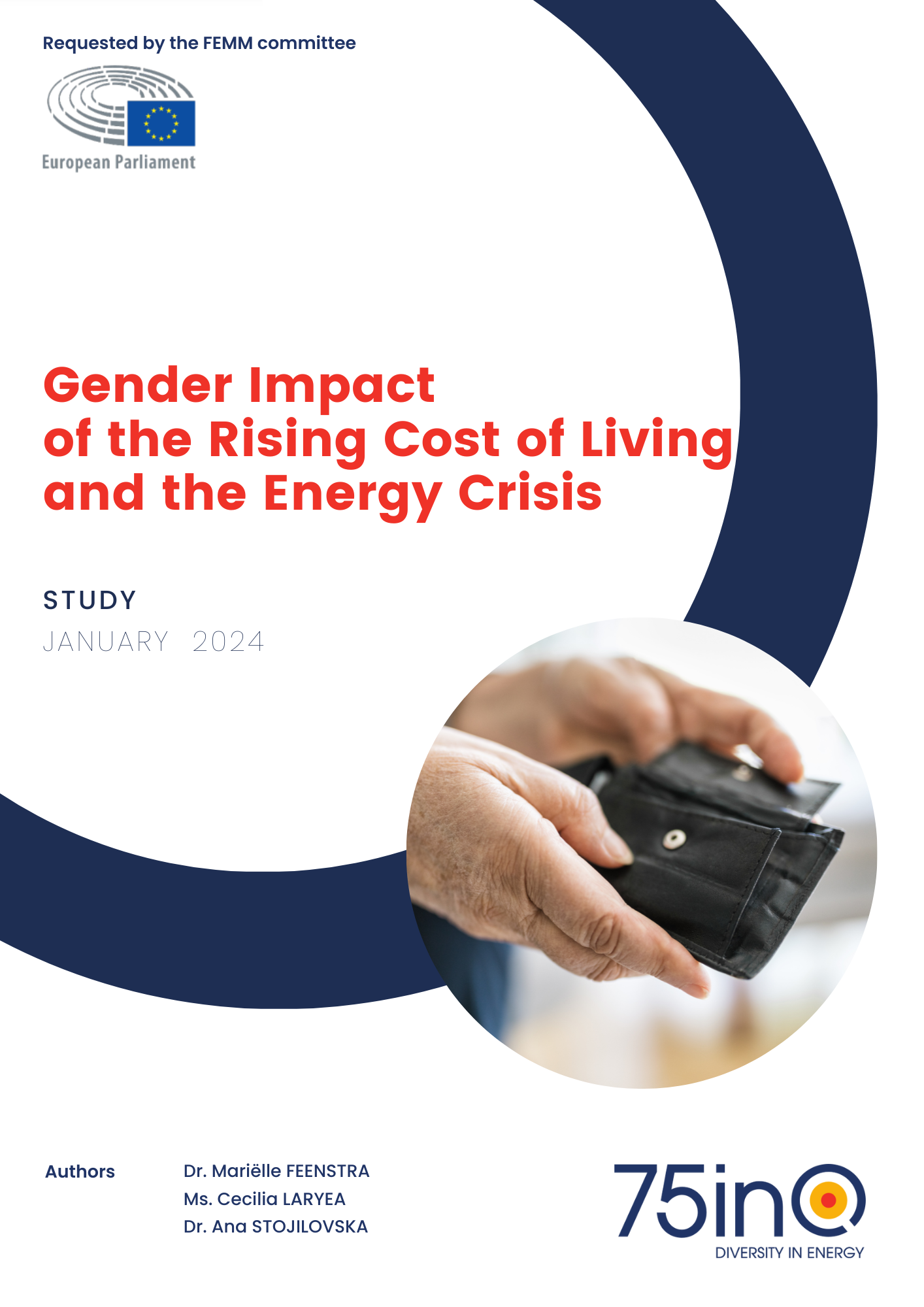Gender aspects of the rising cost of living and the impact of the energy crisis
Study requested by the FEMM committee
Dr. Mariëlle Feenstra, Ms. Cecilia Laryea, Dr. Ana Stojilovska
January 2024



Citation
Feenstra, M., Layea, C., Stojilovska, A.(2024) Gender aspects of the rising cost of living and the impact of the energy crisis. 75inQ

Introduction
This study scratches the surface of the hidden face of the gendered impact of the rising cost of living and the ongoing energy crisis in the European Union. Scratching the surface, because the real impact is not easy to measure, and data have only been collected recently. What is clear is that the permanent gender inequality in European society impacts how people can absorb shocks inflicted by crises. We are still in the aftermath of the COVID-19 pandemic crisis and in the ongoing climate crisis. On top of that, the EU Member States are faced with an energy crisis due to the war in Ukraine spiking up the cost of living of all European households. The gender income gap, combined with other gender inequalities, brings the burden of absorbing these crises on women more than on men.
Executive summary
This study scratches the surface of the hidden face of the gendered aspects of the rising cost of living and the ongoing energy crisis in the European Union. Scratching the surface, because the real impact is not easy to measure, and data have only been collected recently. What is clear is that the permanent gender inequality in European society impacts how people can absorb shocks inflicted by crises. We are still in the aftermath of the COVID-19 pandemic crisis and in the ongoing climate crisis. On top of that, the EU Member States are faced with an energy crisis due to the war in Ukraine spiking up the cost of living of all European households. The gender income gap, combined with other gender inequalities, brings the burden of absorbing these crises on women more than on men.
Single-headed households, particularly those headed by women, are more vulnerable to the negative impacts of inflation. Their limited income, higher living expenses, and reduced financial flexibility can make it challenging to navigate periods of rising prices. Policymakers and support organisations often recognize the need for targeted assistance and social programmes to mitigate the inflation-related vulnerabilities faced by single parents and their families. Single-headed households, especially those with low incomes, may rely on social safety nets and government assistance programmes. Inflation can strain these programmes and reduce the real value of benefits, making it harder for families to make ends meet.
The current attention of the European Commission and of the Member States to the rising cost of living expenses is gender sensitive by recognizing women’s vulnerable condition and the existing income gender gap throughout the European Union. Women’s income is impacted by a variety of mutually reinforcing and intersecting factors, adding to the complexity of the vulnerability of women’s economic situation and advocating for a holistic approach to closing the gender income gap.
Gender equality is not just a matter of social justice but also a fundamental driver of sustainable livelihoods for women. By removing barriers and ensuring equal opportunities, societies can unlock the full potential of women as active contributors to economic, social, and cultural development. Promoting gender equality benefits not only women but also entire communities and nations, leading to more inclusive and prosperous societies.
Key findings
The gendered impact of the increasing cost of living and the energy crisis in Europe is that:
- More women than men are impacted by the increasing cost of living in Europe due to the combination of the gendered income gap, the income insecurity of women, the lower pensions of women, the gendered inequalities in care responsibilities;
- The energy crisis in Europe results in more women than men facing energy poverty in their inability to afford the energy needs;
- The COVID 19-crisis and its aftermath impacted women more than men due to their gendered role in care responsibilities and their income generating activities in the service sector.
Policymakers at both the European and the national level responded with several policy initiatives to mitigate the impact of the increasing cost of living and the energy crisis. However:
- Most policy responses reported in Eurofound’s EU PolicyWatch database are temporary and ad hoc, lacking a permanent structure.
- Unlike initial pandemic responses, social partners have played a lesser role in designing the measures.
- One-off lump sum payments are more prevalent than monthly support, with policies directed towards the general population or specific groups, often excluding higher-income individuals.
- Governments predominantly resort to tax cuts or credits to influence prices, with few employing subsidies or price controls.
- Measures aimed at vulnerable groups tend to offer financial support for individual choice, while non-targeted actions primarily address energy bills and fuel prices (European Foundation for the Improvement of Living and Working Conditions, 2022).
- Policy interventions are in general gender blind and take the household or energy consumer as homogeneous entity not acknowledging intersectional characteristics like gender, age, household composition, disability, etc.
